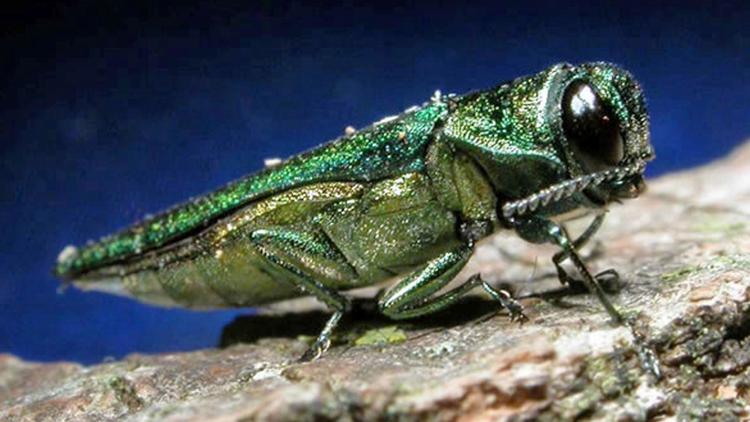COLLIN COUNTY, Texas — Shortly after it was confirmed in Dallas’ Great Trinity Forest, the invasive emerald ash borer beetle has been found in two more North Texas counties.
The Texas A&M Forest Service confirmed Monday that the beetle, which kills ash trees by eating the tissues under the bark, was also found in Collin, Franklin, Johnson and Red River counties.
The news comes after the beetle, which kills ash trees by eating the tissues under the bark, was confirmed in Grayson, Hill, Hood, McLennan and Palo Pinto Counties May 14. It’s now been detected in 24 Texas counties.
“The continuous spread of EAB is a great concern for our ash tree population,” said Allen Smith, Texas A&M Forest Service Regional Forest Health Coordinator. “EAB has the potential to wipe out ash as a genus in North America, meaning no more ash trees period.”
Adult specimens were collected from Collin, Franklin, Johnson and Red River Counties in May and tentatively identified as EAB. Texas A&M Forest Service sent them to the USDA Department of Animal and Plant Health Inspection Service (APHIS) national lab for confirmatory identification. Lab results for both specimens tested positive as EAB.
“There is no known way to stop the spread of EAB,” said Gomez. “But communities can minimize loss, diversify their tree species and increase the health and resiliency of urban forests.”
Once the presence of EAB is confirmed in a county, the Texas Department of Agriculture (TDA) assumes regulatory responsibility including establishing quarantines. The state’s mandatory quarantine by TDA restricts the movement of any woody ash material exiting the county or quarantined area.
“Because EAB is transported unintentionally on firewood and wood products, the quarantine helps slow the beetle’s spread by restricting the movement of wood in and out of affected areas,” said Demian Gomez, Texas A&M Forest Service Regional Forest Health Coordinator.
All species of ash are susceptible to the destructive EAB. Most infested trees die within two to five years after infestation.
Dallas officials confirmed Monday that the emerald ash borer was found in the Great Trinity Forest and near the intersection of Loop 12 and I-30 in Dallas. The more-than-7,000-acre Great Trinity Forest, which straddles the Trinity River between I-45 and U.S. 175 in southern Dallas, is considered the largest urban hardwood forest in the country.
Last summer, emerald ash borer was also found in Dallas near Dowdy Ferry and I-20, officials say.
The emerald ash borer was first discovered in North America in Michigan in 2002. Since then, the invasive pest has spread to 35 states, including Texas, where it was first detected in Harrison County in Northeast Texas in 2016.
For more information, visit Texas A&M Forest Service’s website.



